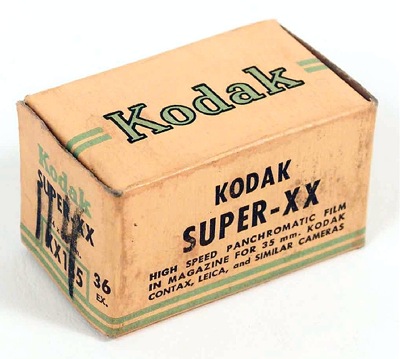 [This four-part Guest Post by military historian Charles Herrick results from the Capa D-Day Project team’s determination to consider all possibilities, follow all leads, answer all pertinent questions and, to the extent possible, tie up any remaining loose ends.
[This four-part Guest Post by military historian Charles Herrick results from the Capa D-Day Project team’s determination to consider all possibilities, follow all leads, answer all pertinent questions and, to the extent possible, tie up any remaining loose ends.
In this series, Herrick pursues further the question of whether LIFE staffer Bob Landry, assigned to cover the attack on Utah Beach, landed there on D-Day or, instead, on D+2. In all fairness, Landry himself never claimed to have landed on the morning of the invasion. The assumption that he did land on D-Day rests on inference drawn from various accounts by John Morris of LIFE magazine and a single sentence in a post-D-Day radio broadcast by CBS correspondent Larry LeSueur, a member of Edward R. Murrow’s broadcast team.
I asked Herrick to reconsider the photographs Landry made during the early days of the invasion, as well as Morris’s inconsistent accounts of Landry’s role and LeSueur’s broadcast, comparing these with military documentation from the archives.
Part 3 of his analysis appears below; click here for Part 1, and here for Part 2. The final part will appear shortly. — A.D.C.]
•
Landry and LeSueur, Reconsidered (3)
by Charles Herrick
… In his 1984 Washington Post interview, Larry LeSueur claimed to be one of the few men on the LCT that transported him to Utah Beach who didn’t get seasick, so he and regimental commander Col. James Van Fleet (presumably another iron-stomached passenger) prepared a meal of beans, which few were able to eat. The original June 1944 broadcast made no mention of this, but the version in The Murrow Boys doubled down on the anecdote. It had LeSueur and Van Fleet preparing a meal for all on board — to include the Navy crew, making for a total of about 90 soldiers and sailors — most of whom had no appetite for it due to their mal de mer.
This anecdote would have been a perfect example of Van Fleet’s leadership and virtually an obligatory passage in his biography. Yet it was curiously absent from that work, raising suspicions that it was a product of LeSueur’s imagination. In fact, LCTs had small galleys that could only support their own crews; embarked Army troops thereon were fed by means of field rations individually prepared by the soldier — what we now call MREs, or meals ready to eat. (For a tour of LCT 7074, the last surviving D-Day vessel of its class, click here.) Again, LeSueur’s specifics suggest that he simply was not there.
The sketch of his landing starts out a bit more believably. In his 19 June 1944 broadcast he stated,
“And we tramped forth from our barge towards tiny personnel assault craft. And with the regimental combat team, we began a rough ride in to the beach.”
This seems to describe the command group’s actual landing; they offloaded from the LCT into the smaller LCVP and rode it to the shore for an early landing with the initial waves of the 8th Infantry. But in the 1984 interview he omitted this entirely. To make matters worse, the version in The Murrow Boys had LeSueur stepping directly from the LCT into the surf. It’s a very confused set of recollections for a correspondent trained to accurately observe events.
LeSueur’s description of his landing is equally questionable. In the 1944 broadcast he said, “I don’t remember wading ashore — I think I must have just skipped in to get my feet on the ground.” That perhaps qualifies him as the only participant in the D-Day landings who could not vividly remember struggling through a hundred yards of surf and across two hundred yards of open sand while under fire. It’s a remarkable — if not suspicious — gap in his memory. In both the 1984 interview and in The Murrow Boys his memory seemed to have returned a bit, with a brief description of emerging from the surf and struggling through the sand until he collapsed at the seawall.
•
Most of LeSueur’s details of this episode (enemy shelling, wrack, ruin, and bloodshed) are extraordinarily generic, and could have been drawn from any other landing. What especially raises eyebrows is this statement: “There were quite a few helmets floating around in the water nearby, which increased our apprehension.” Given the relatively low casualties at Utah Beach, it’s curiously specific — and suspicious.
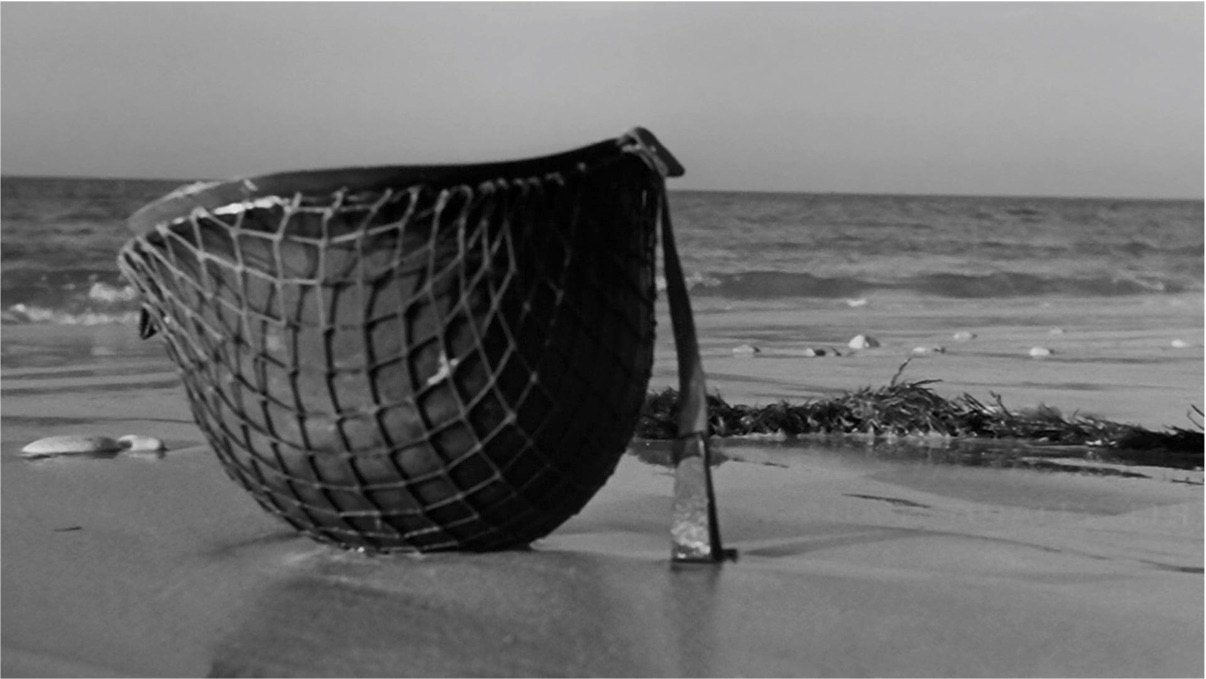
The iconic opening scene of the 1962 movie The Longest Day, a staple of Memorial Day weekend television viewing for several decades.
As one indication of the relatively light casualties there, the 4th Division put over 20,000 men ashore on D-Day, but its losses that day — to include the fighting inland — totaled just 197 men, a third of which went missing due to LCTs hitting mines three miles offshore. And only a fraction of the remaining casualties would have been incurred by the time LeSueur landed, which he claimed was 20 minutes after H-Hour.[1]
Furthermore, steel helmets are not known for their buoyancy, and are extremely unstable in the surf zone. In short, they sink. Which is why they do not appear bobbing in the surf in contemporary films of the invasion.
I suspect the floating-helmet anecdote is an iconic pop-culture symbol LeSueur lifted and included as part of his own war story, 40 years after the event. In this case, it would seem he borrowed it from the opening scene of the 1962 movie The Longest Day, an epic three-hour Hollywood film directed by Darryl F. Zanuck and chronicling and glamorizing the invasion. Even now, the solitary upside-down helmet on the beach remains a powerful symbol of the human cost of the invasion. Except that the movie’s helmet sat on the sand above the waterline, whereas when LeSueur took the image for his own use he mistakenly upped it to a flock of helmets floating in the surf.
All things considered, LeSueur’s use of the floating-helmet image is a fanciful and gratuitously lurid detail. It’s the kind of picturesque but contrived image a person who has not taken part in an assault landing would include for consumption by an audience equally ignorant of such an affair. Ultimately it merely undercuts his credibility.
•
His next dubious anecdote, to which I referred earlier, involved the captured German officer. LeSueur’s broadcast stated,
“The stunned Germans defending the beach were being gathered in, and I remember their tall, blond Nazi captain. Dressed immaculately, he was, and as arrogant as ever. He refused to lie down with the rest of his men, although German shellfire was hitting the beach, and when my colleague Bob Landry of Life magazine tried to take his picture, the Nazi officer turned his back on him and on the whole American landing with deepest scorn.
“A few minutes later a German shell hit the beach, and the German captain went down forever. He was killed by his own shellfire.”
LeSueur portrayed him as a caricature of the Prussian Nazi, who ironically, but justly, received his due when he was killed by a German shell after he arrogantly refused to seek cover. It’s a catchy story, and no doubt played well to wartime audiences. But none of the strongholds captured by American troops up to that point on D-Day had been commanded by a captain.
Still, this anecdote actually does seem to have at least some foundation. The first enemy fortification to fall on Utah Beach was WN 5,[2] commanded by Lieutenant Arthur Jahnke. Jahnke had earned the Knight’s Cross and suffered a wound while fighting in Russia less than two months earlier. His injury got him evacuated to Germany and eventually transferred to France. As a regular officer with years of combat experience in the East, he cut a notably professional figure in a unit filled with reservists, the very young, the very old, and the convalescing, all of whom were used to soft living in occupied France.
Despite his dedication, his strongpoint had been all but wiped out by the air and naval bombardment at dawn on 6 June; when Col. Van Fleet’s men landed in front of Jahnke’s position his remaining defenses were soon overrun, with Jahnke himself partly buried by an explosion. He was pulled out by a GI and, thoroughly bedraggled, was taken captive. Jahnke was among the first Germans captured on Utah Beach, and undoubtedly the first German officer. And, indeed, Jahnke was wounded by German artillery fire shortly thereafter. So LeSueur’s anecdote possibly has its origins in Jahnke’s tribulations.
Except that after all his previous combat experience and his wounding in Russia, not to mention that same morning’s aerial, naval and tank bombardment (which nearly entombed him), he well understood the lethality of modern combat and the value of cover. Which is why, at the moment when he was wounded by his own artillery, he was prone, prudently seeking shelter behind the seawall on Utah Beach.[3] Did LeSueur fabricate the details of an arrogant Nazi officer who refused to take cover and got his just due? Or did he later hear Jahkne’s story at second- or third-hand, with exaggerated details added along the way? Either is possible, but the evolving picture of LeSueur’s adventures seems to indicate the latter.
Route Confusion
In the next phase of his saga, LeSueur supposedly moved inland on the coattails of Col. Van Fleet, heading toward the village of Sainte Marie-Du-Mont, and, while doing so, encountered a knocked-out tank on the causeway leading from the beach:
“The first tank that tried to cross was hit by a German antitank shell. The second American tank fired one shot at the German antitank gun and silenced it. We were on our way.”
But that simple passage contains a few red flags. Col. Van Fleet — and supposedly LeSueur — had followed in the wake of his 2nd Battalion, moving south along the beach, then inland along the causeway at Exit 1. Although a longer route, that causeway crossed at its narrowest point the highly dangerous, inundated area that separated the landing beaches from dry ground inland. Not only did this route minimize the chances of being pinned down on a causeway, it offered the quickest linkup with the airborne forces that had parachuted in the night before.
But that causeway led to the village of Pouppeville, not Sainte Marie-du-Mont. This distinction may seem minor, especially since the 2nd Battalion did push on to Sainte Marie-du-Mont later in the afternoon. However, a major event occurred at Pouppeville — one that, it appears, LeSueur completely missed.
•
At the inland end of Exit 1, on the outskirts of Pouppeville (not Sainte Marie-du-Mont), Van Fleet and his men first contacted the paratroopers, at 1110 hours; it was the first crucial linkup between the invading seaborne and airborne forces.[4] More significantly for anyone following Van Fleet, it was there at Pouppeville that the colonel met Major General Maxwell D. Taylor (commander, 101st Airborne Division); together they effected the first coordination between seaborne and airborne forces. It was a momentous occasion, to say the least, and one sure to capture headlines. Yet acclaimed correspondent LeSueur omitted it entirely, instead placing the linkup at a different village. At the very minimum, LeSueur’s omission of these crucial events and confusion of locations suggests that he did not follow Col. Van Fleet as he claimed.[5]
Further questions get raised by his description of the knocked-out tank. Of the tanks following the 2nd Battalion, only one (belonging to Lieutenant Ahern, the company commander) was disabled on the causeway at Exit 1, and that by a mine. No tanks were knocked out by anti-tank guns on the route LeSueur said he took, for the very good reason that the paratroopers had already captured the German positions defending the inland end of that causeway before the seaborne troops arrived. If LeSueur saw a tank knocked out by German anti-tank guns on a causeway, then he didn’t follow Col. Van Fleet inland and didn’t cross the causeway behind Exit 1.
The knocked-out tank anecdote does, however, provide important clues. Over on the causeway behind Exit 2, the first tank to advance on the narrow road through the swamps was disabled by a mine. The next tank through was then knocked out by an anti-tank gun, which was in turn silenced by the third tank in the column. This action fits so closely with LeSueur’s narrative that it clearly indicates he followed the route of the 3rd Battalion through Exit 2, a route that also happened to lead directly to Sainte Marie-du-Mont. If he followed this route, then his first encounter with paratroopers would have been there, as he in fact claimed, rather than at Pouppeville, with Van Fleet. That seems fairly conclusive; he did not follow Van Fleet.
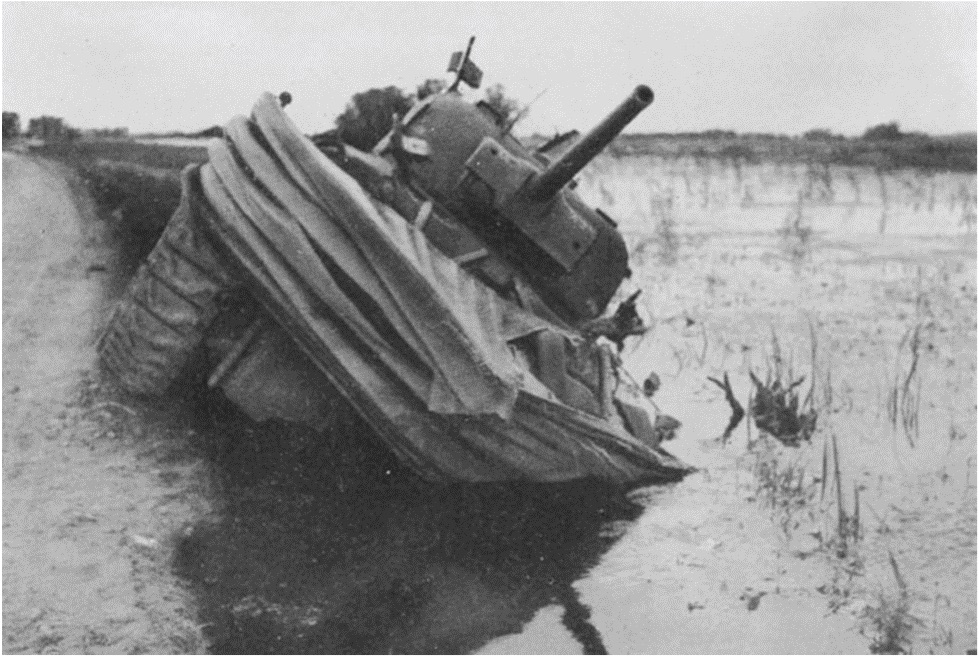
T/4 Partin’s tank that had been knocked out by the German anti-tank gun on Causeway 2 on D-Day. This photo, taken some time after D-Day, shows that the tank had been shoved into the inundated area to clear this vital road for traffic.
•
But LeSueur’s narrative contains two omissions that have greater implications. For one thing, he failed to mention the presence of the first tank in the column on Exit 2, the tank disabled by an anti-tank mine. Why omit this? A scene of two tanks out of action within yards of each other was certainly more worthy of description than a single knocked-out tank. LeSueur also failed to note the corpse of the knocked-out tank’s driver hanging halfway out of his hatch — subsequently identified as Technician Fourth Grade (T/4) James Partin. It was one of those grisly details anyone passing that way early on D-Day couldn’t help but remember. It was especially the kind of bloody detail correspondents love to include — more so in this case, as this lone corpse out in the middle of the swamp greeted in macabre fashion everyone passing inland on this main route.
These two omissions strongly indicate that LeSueur did not move inland on D-Day, and probably not on D+1, either. If he arrived and moved inland on D+2, as I have hypothesized, the tank that had been disabled by the mine would have been repaired by then or at least towed to the battalion’s maintenance site for repair. Either way, it would not still have been on the causeway for LeSueur to note. On the other hand, the hulk of the tank knocked out by the anti-tank gun had been shoved partly into the swamp on D-Day to clear the road, and its hulk remained there for days, the only knocked-out tank for a late-arriving LeSueur to see.
Likewise, by D+2, T/4 Partin’s remains would have been removed and turned over to a graves registration unit for temporary interment. So the scene that LeSueur sketched in his broadcast is what an observer would have seen on Exit 2 on D+2, not Exit 1 early on D-Day. Adding weight to that conclusion is the fact that on D+2 the shortest and primary route inland ran through Exit 2 (as Exits 3 and 4 were not yet open), so LeSueur naturally would have followed that route after landing. In his recording, I believe he mistakenly assumed that Col. Van Fleet had used the same direct route (unaware the colonel had detoured to Exit 1), constructing the tale of his own landing and journey inland based on this error.
Given the vague, highly generic and often clearly incorrect details of his narratives, it appears that much of LeSueur’s reporting was merely a mishmash of secondhand accounts which he gathered from those who landed before he did, and which he imperfectly incorporated into his own story. This impression continues with his next anecdote, the seizure of Sainte Marie-du-Mont. …
•
Notes:
[1] Van Fleet’s actual landing time is uncertain, but this time seems reasonable. His LCVP was a “free boat,” meaning that it had no assigned beaching time, and would land whenever the colonel decided.
[2] Wiederstandneste #5, German for resistance nest (or strongpoint) number 5, and commonly abbreviated as WN5.
[3] Lt. Arthur Jahnke’s fascinating story is contained in Paul Carel’s Invasion! They’re Coming! Originally published in German, it provides the perspective of the German defenders in Normandy. David Johnson’s translation was published by Schiffer Military History, Altgen, PA in 1995.
[4] The time 1110 hours comes from then-Captain George L. Mabry, operations officer of the 2nd Battalion, 8th Infantry, who made the linkup. As cited in The Victors: Eisenhower and His Boys: The Men of World War II , by Stephen Ambrose (New York: Simon & Schuster, 1998).
[5] This omission cannot be blamed on concerns for security. On 15 June/D+9, censors had approved release of information concerning the identification and involvement of both the 82nd and 101st Airborne Divisions in the invasion (per Appendix to 21 A/Gp29767/P & PW, dated 13 July 1944, subject: Formations and Units Released to Date). LeSueur made his recording six days later on, 19 June/D+13.
Text copyright © 2022 by Charles Herrick. All rights reserved.
•
(For an index of links to all posts in this series, click here.)
•
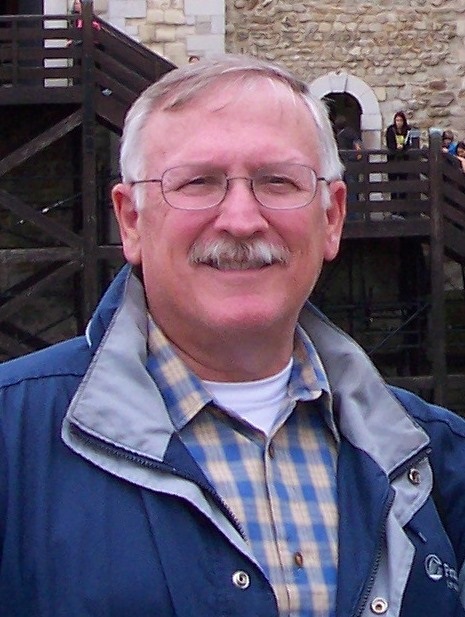 Charles Herrick joined the U.S. Army in 1970 and graduated from the U.S. Military Academy at West Point in 1974. Commissioned in the Infantry, he earned the Ranger tab and Master Parachutist’s wings. He served in a variety of positions from company grade officer to the Pentagon. He earned the Combat Infantryman’s badge while assigned as the Operations Officer of the 193rd Infantry Brigade in Panama in 1989, and later graduated from the U.S. Army War College.
Charles Herrick joined the U.S. Army in 1970 and graduated from the U.S. Military Academy at West Point in 1974. Commissioned in the Infantry, he earned the Ranger tab and Master Parachutist’s wings. He served in a variety of positions from company grade officer to the Pentagon. He earned the Combat Infantryman’s badge while assigned as the Operations Officer of the 193rd Infantry Brigade in Panama in 1989, and later graduated from the U.S. Army War College.
Since retiring from the Army in 1996, Herrick has continued to work on defense issues as a contractor in East Asia, Latin America, the Balkans, Africa and Central Asia. He holds an MBA from the University of California at Los Angeles. He lives in California with his wife, where he pursues his passion for military history. To contact Charles Herrick, click here.


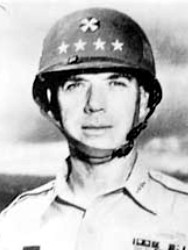
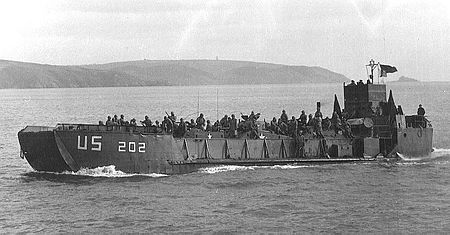
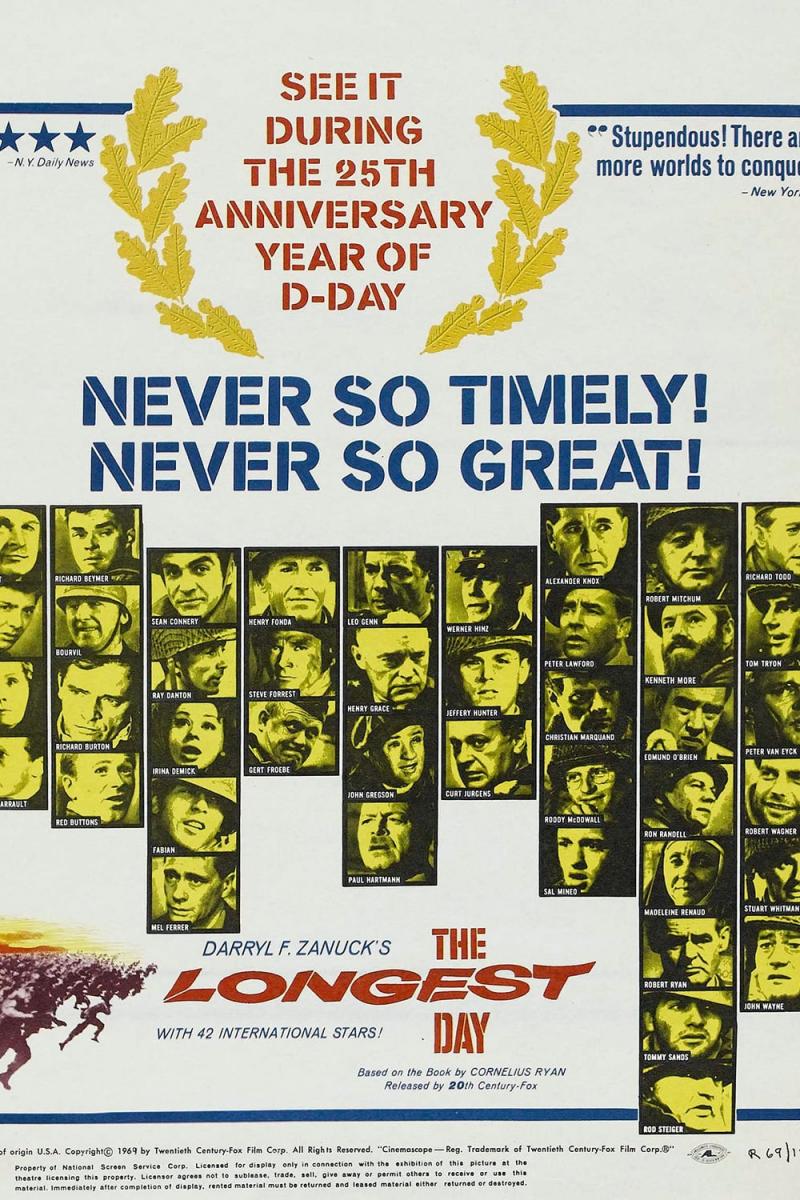
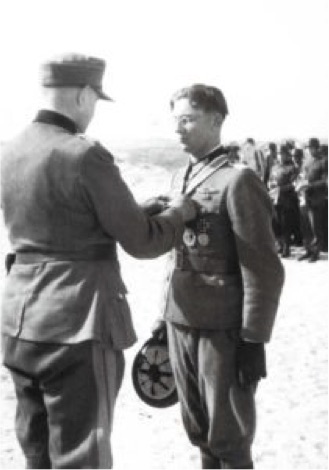
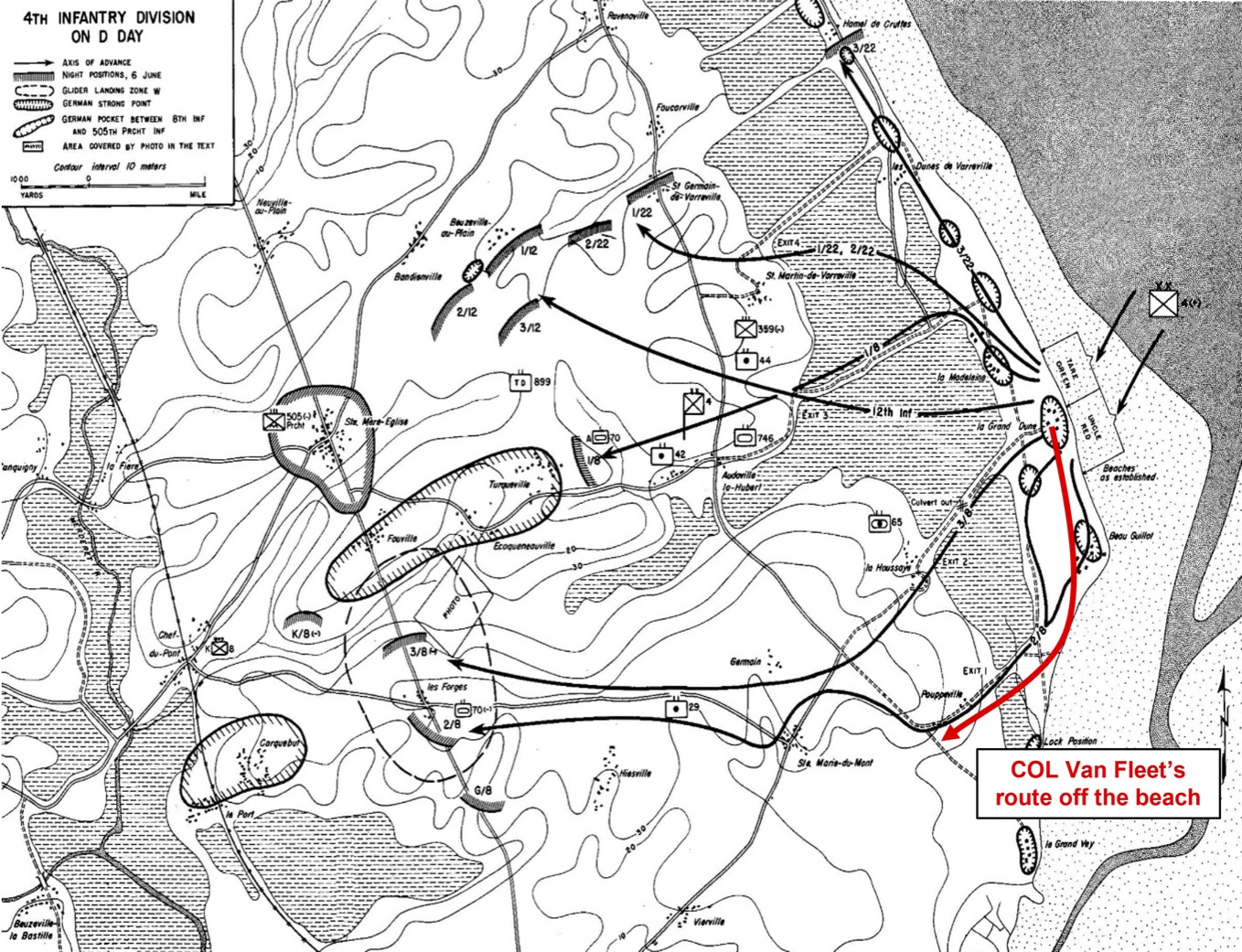
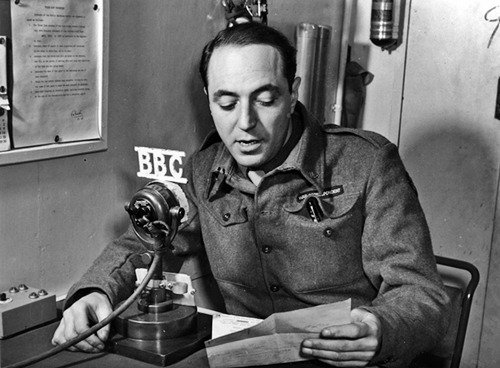




Leave a Comment